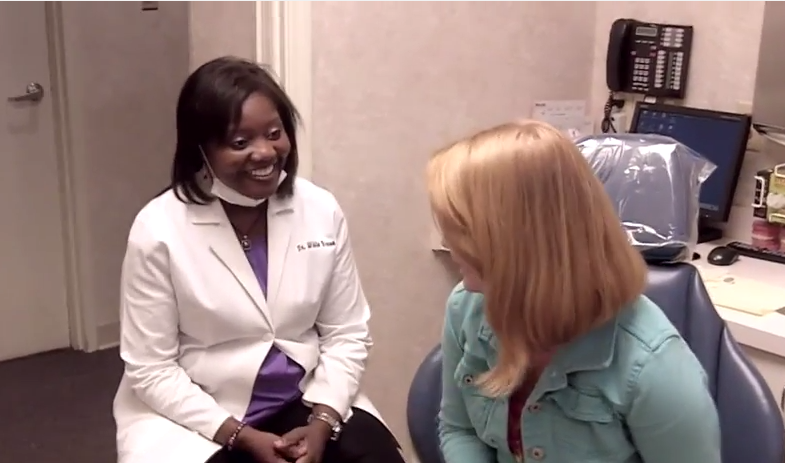How Do I Brush with Braces?
Now that your child has braces on for the duration (however long, or short, that duration might be), you must make sure your child brushes his or her teeth and gums better than ever before.
Extra care must be taken in the area between the gums and your child’s appliance. Food that collects around the braces and wires can cause swollen gums, permanent stains (decalcification or white spots), and cavities.
Here are some simple tips you can share with your child for the best results when brushing with braces on:
- Brush your teeth with a medium nylon toothbrush after you eat and before bed.
- Brush, rinse, and look; if you find any areas that are not clean, brush them again.
- Brush your gums as you brush your teeth (massage and stimulate).
- If no toothpaste is available, brush without.
- If you are unable to brush, rinse your mouth vigorously with water.
- Replace your old toothbrush when it gets worn out.
- It is absolutely essential that you continue regular visits to your family dentist for checkups and cleanings throughout your orthodontic treatment!
How Do You Clean Your Braces?
For a funny look at a few ways not to clean your braces, check out Dr. White Brown’s video. You can also learn some great tips to keep your teeth and gums healthy during orthodontic treatment. Watch the video below:
<video>
What if Something Breaks?
While orthodontists recognize that most “emergencies” having to do with braces are not life-and-death situations, we also understand that situations may occur that cause discomfort and even pain.
Perhaps a wire breaks or you accidentally eat something that causes a problem, such as sticky taffy or a burger bun with sesame seeds. I have provided the information below to help you prevent those types of emergencies and also to answer some of the most common questions regarding these special situations.
If you are experiencing an orthodontic emergency that can’t wait for regular office hours, most orthodontic offices have a special number to call, either before, during or after business hours. If this information isn’t given to you readily, check to see how your doctor’s office handles emergencies. Remember, information is power and the time to ask about a 24-hour emergency call center number is before your child loses a bracket or eats a piece of toffee, not after!
Watch Dr. White Brown’s video below “A Quick Fix for Broken Braces”
<video>
When Emergencies (Really) Aren’t!
Some emergencies actually aren’t. Or, if they are, can be easily and safely remedied at home. Case in point: teeth, when moving, can be really tender for about a week after the initial placement of the orthodontic appliances and also after each adjustment.
Discomfort can be relieved by over-the-counter pain relievers such as Tylenol or Motrin. Follow the dosage recommendations and any additional precautions as listed on the bottle. Some patients find it helpful to take the first dose at the appointment time to help prevent some of the discomfort to come when the teeth start to move.
During the first two weeks, the inside of your cheeks will be tender because they are not used to the braces. As time goes by, the inside of the cheeks will toughen up and adjust to the braces. While the cheeks are still sensitive, using wax on the rough spots can be very helpful. Also helpful are warm saltwater rinses which soothe the cheek lining (see instructions below).
Some inconveniences while going through treatment are normal. Many times repairs can be put off until your next regular appointment. Of course, your orthodontist is there to serve you and encourage you to call any time you have a question.
